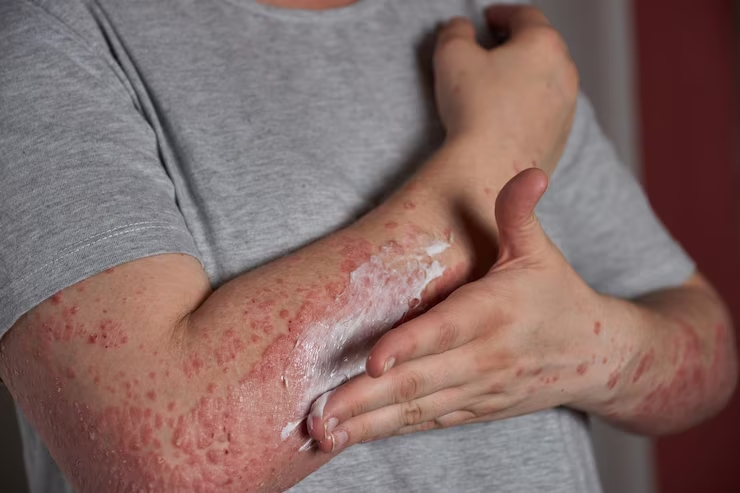Paraneoplastic Pemphigus (PNP) is an exceptionally rare autoimmune blistering disease that is often associated with underlying malignancies, typically lymphomas or leukemias. This condition is characterized by the development of painful blisters and erosions on the skin and mucous membranes. In this article, we delve into the causes, symptoms, and treatment options for Paraneoplastic Pemphigus.
Causes: Paraneoplastic Pemphigus is classified as a paraneoplastic syndrome, which means it is a manifestation of an underlying cancer rather than a direct result of the malignancy itself. The exact mechanisms underlying the development of PNP are not fully understood. However, it is believed to be triggered by an immune response directed against both cancer cells and specific proteins in the skin and mucous membranes. This immune response leads to the formation of blisters and erosions.
PNP has been associated with various types of cancer, including lymphomas (especially non-Hodgkin’s lymphoma), leukemias, thymomas, and other solid tumors. It is important to note that not all individuals with PNP have an identifiable malignancy, but a thorough evaluation is necessary to rule out underlying cancer.
Symptoms: Paraneoplastic Pemphigus can present with a wide range of symptoms that primarily affect the skin and mucous membranes. These include:
- Painful Blisters and Erosions: The hallmark of PNP is the development of fluid-filled blisters on the skin and mucous membranes. These blisters can be painful and may rupture, leading to erosions and ulcers.
- Oral Involvement: The mouth is commonly affected in PNP, with blistering and erosions occurring on the gums, tongue, and inside the cheeks. This can cause difficulty in eating, swallowing, and speaking.
- Skin Involvement: PNP can lead to blistering and erosions on the skin, particularly in areas prone to friction, such as the armpits, groin, and between skin folds. The skin lesions can be painful and may become infected.
- Respiratory Complications: In severe cases, PNP can affect the respiratory system, causing blistering and erosions in the airways. This can result in coughing, difficulty breathing, and potentially life-threatening complications.
- Eye Involvement: PNP can also affect the eyes, causing redness, irritation, and blistering on the conjunctiva (the thin membrane covering the whites of the eyes).
Treatment: The management of Paraneoplastic Pemphigus involves both addressing the underlying malignancy and controlling the autoimmune response causing the blistering. The treatment approach may include:
- Cancer Treatment: The primary goal is to treat the underlying cancer through chemotherapy, radiation therapy, or surgical intervention, depending on the specific malignancy. Successfully managing the cancer can lead to improvement in PNP symptoms.
- Immunosuppressive Therapy: Medications that suppress the immune system, such as corticosteroids, immunosuppressants (e.g., azathioprine, mycophenolate mofetil), and rituximab (a monoclonal antibody), may be prescribed to reduce the autoimmune response and alleviate symptoms.
- Supportive Care: Pain management, wound care, and prevention and treatment of infections are essential components of PNP management. Topical medications, dressings, and oral hygiene measures may be recommended to promote healing and prevent complications.
- Ongoing Monitoring: Regular follow-up with dermatologists and oncologists is crucial to monitor the progression of PNP, assess response to treatment, and monitor for cancer recurrence or development of new malignancies.
It is important to note that Paraneoplastic Pemphigus is a complex and challenging condition to manage. The prognosis and response to treatment can vary depending on the underlying malignancy, the extent of organ involvement, and the individual’s overall health.
In conclusion, Paraneoplastic Pemphigus is a rare autoimmune blistering disease associated with underlying malignancies. Prompt diagnosis, identification of the associated cancer, and appropriate treatment are key in managing this condition. Collaborative care involving dermatologists, oncologists, and other healthcare professionals is essential to provide comprehensive treatment and support for individuals affected by Paraneoplastic Pemphigus.










